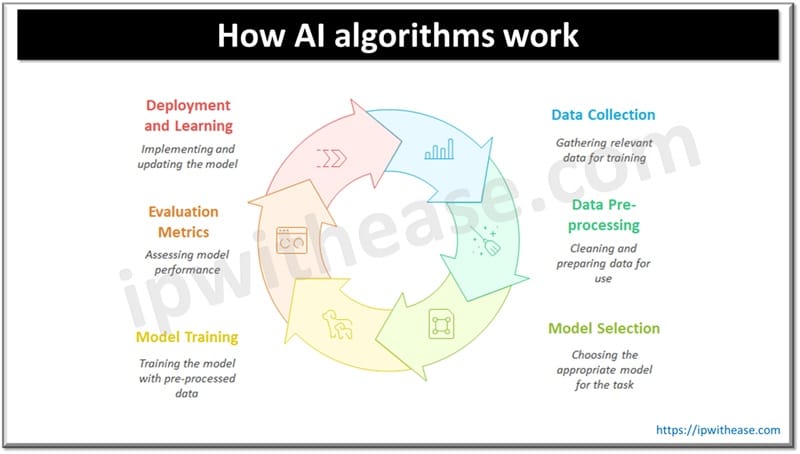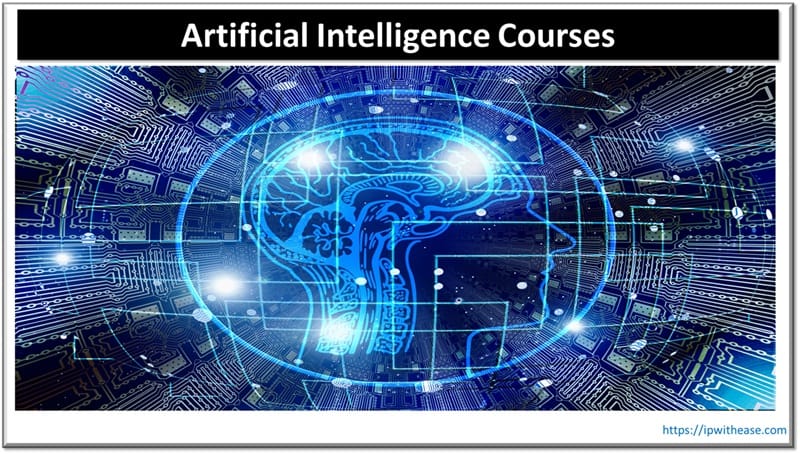Table of Contents
Artificial intelligence functioning relies heavily on AI algorithms which are the building blocks for all AI systems. AI algorithms provide the functionality to learn, decide and solve problems. As the usage of Artificial intelligence grows in different fields such as banking and medicine the complexity and importance of AI algorithms is also increasing multi-fold.
AI algorithms rely on three major components to function and act as building blocks for any AI systems.
AI algorithms require quality data to learn and expand, more diverse is the data set, more sophisticated would be the functioning of algorithms, tweaking algorithms with detailed statistical strategies makes them more reliable to produce predictable results and algorithms keep evolving based on user or client feedback.
In this article we will learn about AI algorithms, different types of AI algorithms, how AI algorithms work?

Related: What is Responsible AI? 5 Core Principles of Responsible AI
What are AI Algorithms
AI algorithms are used to solve a variety of problems and these are a set of instructions to be followed. AI algorithms learn from training data received from several sources and become mature with diverse data sets. Some AI algorithms learn on their own and take on new data to refine themselves in the process. AI algorithms mimic human intelligence and can perform tasks independently without any interventions. The success of an AI algorithm would depend on the quality of input data and model on which its functionality is based. Depending on their purpose and learning methodologies AI algorithms are classified into below mentioned categories:
Types of AI Algorithms
Supervised Learning
These algorithms use labelled data sets and demand input-pairs to learn and train. If historical data is available then supervised learning algorithms can produce predictable results. Some examples of supervised algorithms are linear regression and decision trees. Linear regression is mostly applied or used where real estate prices forecasting can be done using continuous input data available. The decision tree is commonly used in the Finance sector to determine creditworthiness.
Unsupervised Learning
This technique tries to reveal patterns in unlabelled data. Ideal for clustering and exploratory analysis some examples are K-mean clustering and principal component analysis (PCA). K-Means clustering is widely used by companies to create market divisions , classifying customers based on their purchasing patterns. PCA is used in image processing to preserve crucial attributes with data simplification.
Reinforcement Learning
Knowledge is acquired on the basis of gaining signals from punishments and rewards. Some applications of reinforcement learning include: Q-learning and Deep Q-learning (DQN). Q-learning is widely used in robotics. Deep Q-learning is popular in gaming.
Neural Networks and Deep Learning
These AI algorithms aid in identifying complex data linkages. It is well suited for computer vision and neural network processing. Some examples are Convolutional Neural Networks (CNNs) used in image recognition and Recurrent Neural Networks (RNNs) used in time series, sequential input and natural language processing. (NLP).
Some popular AI algorithms in AI are:
- Support vector machines (SVM) – They serve in the field of image recognition and bioinformatics.
- Random forests – They serve in the field of financial modelling and customer segmentation
- Natural Language Processing (NLP) – Is used for language translations, sentiment analysis and chatbots
- Genetic algorithm – In problem optimization, resources assignment, scheduling and robot evolution.

How AI algorithms work
- Data collection – Algorithm efficiency is determined by the type of data it collected and used for learning. Any AI algorithm efficiency is primarily determined by the data set it is trained on.
- Data pre-processing – after data acquisition it goes into pre-processing which involves multiple steps such as handling of missing values, normalization and encoding categorically for AI algorithms to identify the data sets
- Model selection – suitable model is determined post pre-processing depending on the requirement as different types are of AI algorithms are suited for different kinds of applications
- Model training – The selected model will undergo the training on pre-processed data. The results are reviewed and algorithm is fine-tuned to adapt and give more accurate predictions
- Evaluation metrics – the output model performance is evaluated on its accuracy, precision, F1 score and recall.
- Deployment and continual learning – after completing evaluation model is exported into real world to operate in real-world. More and more data is used to train the model to keep it up to date.
Continue Reading
Generative AI vs ChatGPT: What is the difference?
ABOUT THE AUTHOR

You can learn more about her on her linkedin profile – Rashmi Bhardwaj



